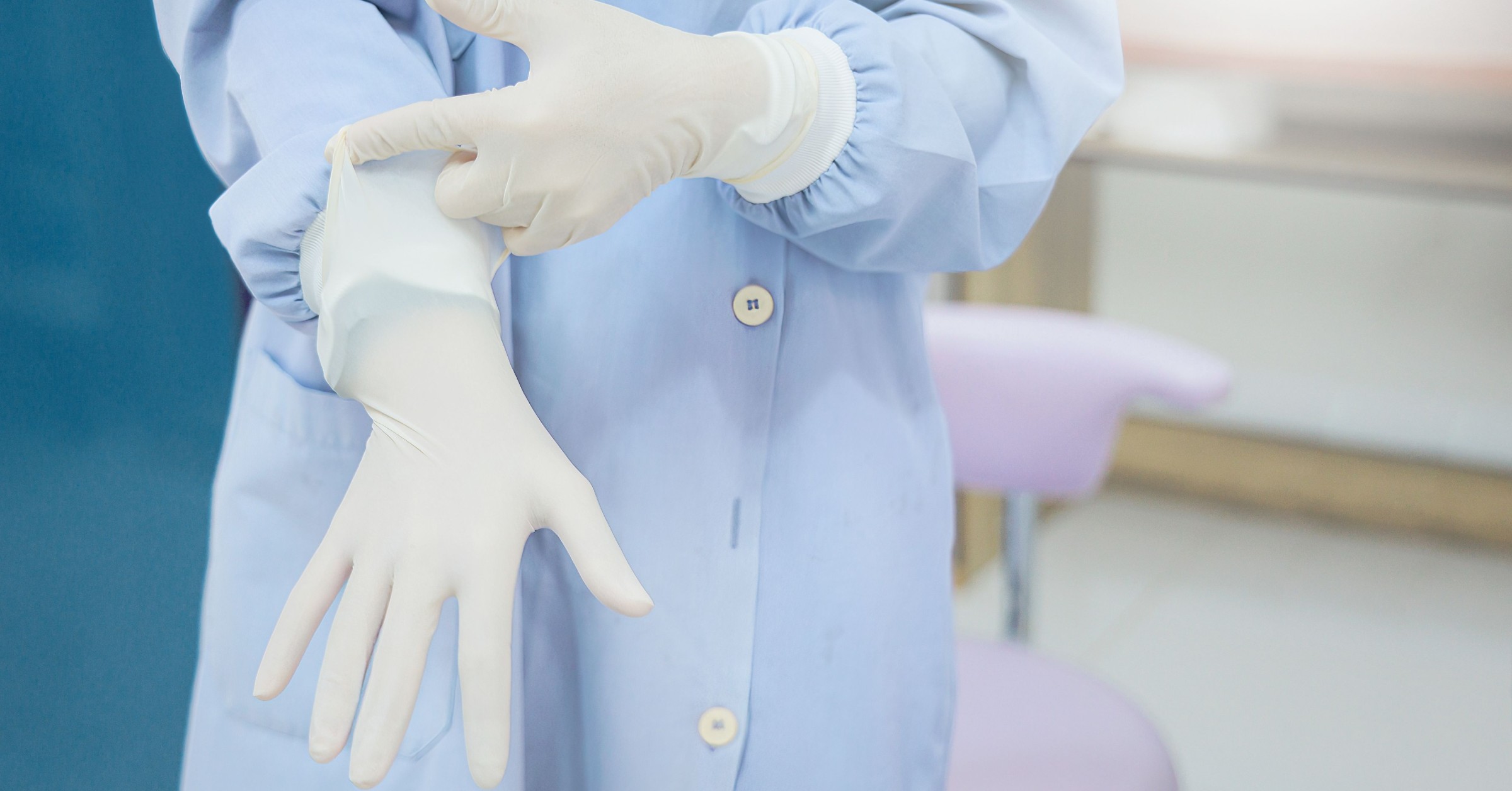Glove products
Practical Solutions for Latex Allergy Management in Dentistry
Managing latex allergies in dental offices is very important. It helps keep everyone safe and comfortable. Latex allergies can cause small skin rashes or serious breathing problems. About 9.7% of healthcare workers have latex allergies. Even more, 12.4% are sensitive to latex. Patients can also be affected, with 3.8% having allergic reactions.
Latex gloves used by dentists are a common cause of these allergies. Using them can lead to itchy skin, trouble breathing, or even dangerous reactions like anaphylaxis. Switching to safer gloves, like INTCO Syntex™ Synthetic Latex Gloves, is a smart choice. These gloves do not contain the allergens in natural latex. They are affordable and work well for dental clinics.
Understanding Latex Allergies
Types of Latex Allergies
There are two main types of latex allergies: type I (IgE-mediated) and type IV (delayed hypersensitivity). Type I happens fast and can cause serious problems like anaphylaxis. Type IV takes longer to show up and usually causes skin issues like redness or itching. Depending on the group, the number of people affected ranges from 3% to 64%. People at higher risk include healthcare workers, rubber factory employees, and those with certain health conditions. Around 15 million people worldwide have latex allergies, with 10% to 17% of healthcare workers affected.
Symptoms and Risks in Dental Settings
In dental offices, latex allergies can show up in different ways. Common signs include itchy skin, redness, or hives. Breathing problems like sneezing, coughing, or wheezing can also happen. Severe cases might cause nausea, stomach pain, or even life-threatening anaphylaxis. Dentists face special risks because they often use latex gloves and tools. A study found that 26.7% of dental workers had symptoms from latex exposure. This shows why it’s so important to deal with these risks in dental clinics.
Why Latex Allergies Are a Concern for Dentists
Latex allergies create big challenges for dentists. Between 6% of the public and 8-12% of healthcare workers are sensitive to latex. Dentists with 5-30 years of experience report the most reactions, with 59.60% affected. Many dentists wear latex gloves for over five hours a day, raising their chances of becoming sensitive. Since latex gloves are a common trigger, switching to synthetic gloves can lower these risks. Training and safety rules are also key to managing latex allergies in dental offices.
Transitioning Away from Latex Gloves in Dentistry

Identifying Latex-Containing Products
Latex is found in many dental items. Replacing these products helps make dental offices safer. Common items with latex include gloves, face masks, and adhesive tapes. In dental offices, gloves are the biggest source of latex exposure. Dentists often wear latex gloves for long hours. This increases allergy risks for both staff and patients. Finding these products is the first step to creating a latex-free workplace.
Benefits of Synthetic Latex Gloves
Synthetic latex gloves have many benefits for dentists. These gloves prevent allergic reactions caused by natural latex proteins. They also allow precise movements, which are important for dental work. Here are some advantages:
-
Reduced Allergy Risk: Synthetic gloves, like nitrile or INTCO Syntex™ Synthetic Latex Gloves, don’t have natural latex proteins. This lowers allergen exposure.
-
Improved Comfort: These gloves feel like latex but are safer. They are comfortable for long use.
-
Enhanced Safety: Synthetic gloves protect better against chemicals and germs. This makes them great for dental procedures.
-
Economic Benefits: Using synthetic gloves can save money by reducing sick days caused by latex allergies.
Why Choose INTCO Syntex™ Synthetic Latex Gloves
INTCO Syntex™ Synthetic Latex Gloves are a great choice for dental clinics. These gloves are safe, comfortable, and affordable. Here’s why they are worth considering:
-
Minimal Allergenicity: Syntex gloves don’t have sulphur or natural latex proteins. This lowers allergy risks.
-
Exceptional Performance: These gloves stretch well and are durable. They fit comfortably for different tasks.
-
Eco-Friendly Design: Syntex gloves don’t have environmental issues like natural latex. They offer a steady supply.
-
Cost-Effective Solution: These gloves feel like latex but cost less. They help save money without losing quality.
Rubber gloves can remind patients of surgery, causing worry or fear. Syntex gloves create a friendlier atmosphere while keeping everyone safe. Nitrile gloves, like Syntex, also protect better against chemicals. This makes them a smart choice for dentists.
Switching to INTCO Syntex™ Synthetic Latex Gloves focuses on safety, comfort, and eco-friendliness. These gloves meet strict FDA and EU CE rules, ensuring reliable protection for staff and patients.
Establishing a Latex-Free Dental Practice

Creating a Latex-Free Environment
Making your dental office latex-free keeps everyone safe. Start by finding all items with latex in your clinic. These could be gloves, dental dams, syringes, or adhesives. Replace them with latex-free options to lower allergy risks. For example, using synthetic gloves like INTCO Syntex™ Synthetic Latex Gloves can help. These gloves are safer and still work well.
Set up areas in your clinic as latex-free zones. Label these spaces clearly to avoid mistakes. Keep latex-free supplies in each treatment room for easy access. This helps protect people with latex allergies and shows you care about their safety.
Tip: Check your supplies often to ensure they are latex-free. This keeps your clinic safe and consistent.
Implementing a Latex Allergy Policy
Having a clear policy for latex allergies is very important. Teach your team why this policy matters. Create a guide that explains how to spot and handle latex allergies. Include rules for using powder-free gloves to reduce airborne latex exposure.
Your policy should also include emergency plans. Make sure you have epinephrine and other emergency tools ready. Train your staff to recognise signs like hives or trouble breathing. They should know how to act fast in serious cases.
Also, inform your patients about latex allergies. Use brochures or videos to explain the risks and symptoms. This builds trust and helps patients share their allergy concerns.
Training Staff on Latex Allergy Management
Training your team helps them manage latex allergies better. Hold workshops or training sessions in your office. Teach them how to find and replace items with latex. Stress the importance of using synthetic gloves like INTCO Syntex™ Synthetic Latex Gloves to stay safe.
Practice emergencies with your team. For example, act out what to do if a patient has an allergic reaction. This hands-on practice makes your team more confident in handling emergencies.
Encourage your staff to share ideas and concerns. Build a workplace where everyone feels comfortable improving safety rules. Update training materials often to include new tips and guidelines.
FAQ
What are the main signs of a latex allergy?
Latex allergies can cause itchy skin, redness, or hives. Breathing issues like sneezing or wheezing might happen too. Serious reactions include nausea or even anaphylaxis. If these signs appear, see a doctor right away.
Are synthetic latex gloves safe for patients with latex allergies?
Yes, synthetic gloves like INTCO Syntex™ are safe to use. They don’t have natural latex proteins that cause allergies. These gloves are comfortable and protect both patients and staff from risks.
How can I create a latex-free dental office?
Replace latex items with safer options like synthetic gloves. Use latex-free adhesives and label areas as latex-free zones. Check supplies often to stay compliant. Train your team to manage allergies and keep the office safe.
Why should dentists switch to INTCO Syntex™ Synthetic Latex Gloves?
These gloves lower allergy risks for everyone in the clinic. They stretch easily, fit well, and meet strict safety standards. They are eco-friendly, affordable, and perfect for dental practices.
What should I do if a patient has a severe allergic reaction?
Act fast. Use epinephrine if you have it and call 911. Watch for signs like trouble breathing or swelling. Train your team to handle emergencies to keep patients safe.
























